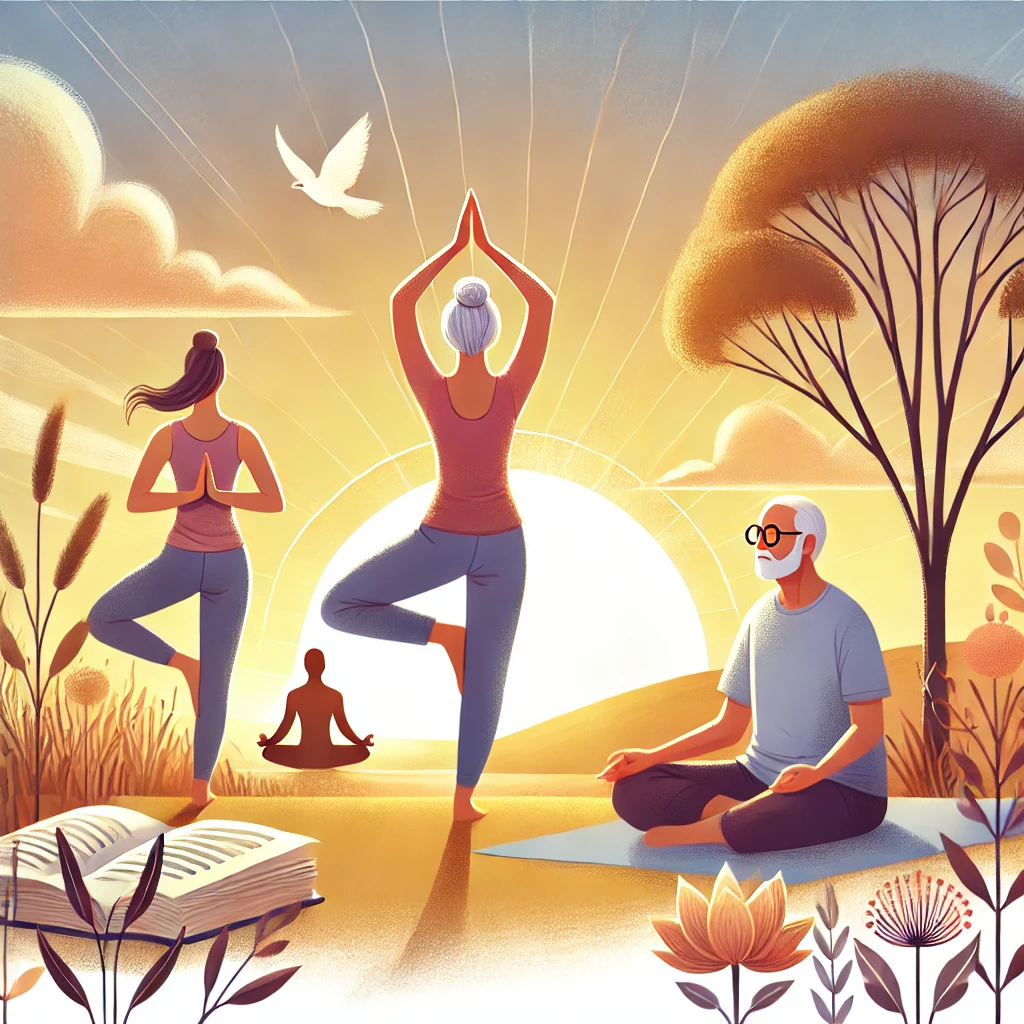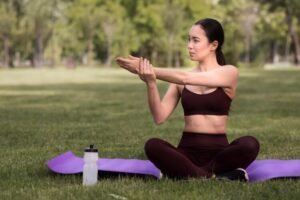
Introduction
Yoga is more than just an exercise; it’s a lifestyle practice that promotes physical, mental, and emotional well-being. No matter your age or skill level, yoga offers something valuable for everyone. From improving flexibility and strength to boosting mental clarity and reducing stress, the benefits are endless.
This guide is designed to help women, beginners, students, and even senior citizens confidently incorporate yoga into their lives. No matter where you are on your yoga journey, you’ll find practical advice to make your practice enjoyable and effective.
Why is yoga important in daily life?
- It helps enhance physical health by improving strength, flexibility, and posture.
- It nurtures mental clarity and reduces stress through controlled breathing and mindfulness practices.
- It creates space for self-care, giving you a dedicated time to connect with yourself.
Now, let’s explore how anyone can get started with yoga and unlock its benefits!
General Yoga Tips for Everyone
Before we get into specific advice for different groups, here are general tips that will help everyone, no matter their yoga goals or experience level.
1. Start with Basic Poses and Breathing Techniques
If you’re just beginning, there’s no need to master advanced poses right away. Focus on foundational movements like Mountain Pose and seated breathing exercises. These will give you a strong foundation for more complex postures later.
2. Be Consistent
Even five minutes a day makes a difference. Consistency matters more than how long your sessions are. Schedule practice into your daily routine and stick to it.
3. Focus on Proper Form
It’s better to execute a simple pose properly than to force your body into challenging ones. Proper alignment prevents injuries and maximizes benefits.
4. Prioritize Hydration and Nutrition
Drink water before and after your practice to stay hydrated. Incorporate light, healthy meals to support your energy and recovery, but avoid heavy meals before yoga.
Yoga Tips for Beginners
Starting your yoga practice can feel exciting yet overwhelming. Follow these tips to make your first steps enjoyable and safe.
Start Slow with Simple Poses
Explore beginner-friendly poses like Cat-Cow, Child’s Pose, and Downward Dog. These are gentle on your body while helping you develop focus and flexibility.
Practice on an Empty Stomach
To avoid discomfort, aim to practice yoga on an empty stomach, ideally first thing in the morning or a few hours after meals.
Invest in a Quality Yoga Mat
A comfortable, non-slip yoga mat makes a world of difference. Having the right equipment ensures stability and safety.
Follow Guided Sessions
Online tutorials or pre-recorded yoga classes for beginners can help you learn techniques and build confidence at your own pace. Consider starting with apps or YouTube channels that focus on beginner yoga.
Yoga Tips for Beginners at Home
If you’re planning to practice at home, here are a few tips to create the perfect environment and maintain your routine.
Create a Calm, Clutter-Free Space
Designate a spot in your home for yoga. Keep the area clean and free of distractions to promote focus and relaxation.
Set a Routine
Pick a consistent time each day for your practice. Early mornings or evenings are ideal for aligning your body and mind.
Use Props for Support
Don’t hesitate to use props like straps, blocks, or cushions to modify poses and make them more accessible.
Stay Motivated
Without a trainer or studio environment, staying motivated can be a challenge. Keep yourself accountable by setting goals or practicing with a friend.
Yoga Tips for Women
Yoga offers unique benefits for women’s physical and emotional health. Whether it’s helping with hormonal balance or providing comfort during pregnancy, here’s how women can tailor their practice.
Poses for Hormonal Balance
Try Butterfly Pose or Reclining Bound Angle Pose to alleviate discomfort and balance hormones.
Menstrual Health Tips
During your cycle, listen to your body and stick to gentle poses like Child’s Pose to ease cramps and improve blood circulation.
Prenatal & Postnatal Yoga
Pregnant women can practice prenatal yoga to build strength and prepare their bodies for childbirth. After delivery, postnatal yoga helps with recovery and reducing stress. Always check with your healthcare provider before practicing.
Improve Flexibility & Strength
Poses like Warrior II and Camel Pose are excellent for improving overall flexibility and building strength in the core and legs.
Yoga Tips for Students
For students juggling academic stress, yoga is a life-saver. It enhances focus, improves posture during long study sessions, and relieves anxiety.
Poses to Improve Concentration
Tree Pose and Eagle Pose encourage balance and focus, boosting your memory and mental clarity.
Breathing Techniques for Stress
Practice deep breathing exercises like Alternate Nostril Breathing or the 4-7-8 technique to calm your nerves during exam season.
Quick Routines for Busy Schedules
Short sessions, even 10-15 minutes between study breaks, can help students stay active and refreshed.
Meditation for Mental Clarity
Start or end your yoga routine with 5 minutes of meditation for improved mindfulness and reduced stress.
Yoga Tips for Senior Citizens
Yoga is one of the safest and most beneficial forms of exercise for aging adults. It aids in maintaining health and mobility as well as alleviating joint pain.
Gentle Poses for Joint Health
Chair Yoga or Cat Stretch Pose are gentle options that help improve flexibility without overstraining the muscles.
Balance Poses
Balancing poses such as Warrior I create stability, helping seniors prevent falls and build strength.
Breathing Practices
Simple breathing techniques like Diaphragmatic Breathing can improve lung capacity and promote relaxation.
Take Precautions
Older individuals should focus on low-impact poses and avoid overstretching. Always consult a physician before starting a new exercise routine.
Practical Tips for a Balanced Yoga Practice
- Mix Yoga with Daily Activities: Integrate stretches or breathing exercises into your daily life for continued benefits.
- Listen to Your Body: Avoid pushing yourself too hard and allow recovery where needed.
- Track Your Progress: Celebrate milestones and adjust your practice as you grow stronger.
- Stay Inspired: Explore different yoga styles or attend classes to keep things exciting.
Start Your Yoga Journey Today
Yoga isn’t just a practice; it’s a lifelong commitment to your well-being. By following the tips in this guide, you can start your yoga practice confidently, no matter your age or skill level.
Remember, consistency and mindfulness are key. The progress you’ll notice in your mind and body will be worth every effort. Whether you’re a beginner, a busy student, or someone simply looking to rediscover balance, yoga meets you where you are.
Take the first step—roll out your mat, breathe, and begin your yoga adventure today!




